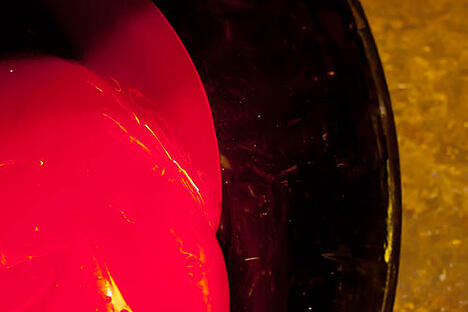 Water-based inks are defined as those that utilize water as the main solvent. That does not mean, however that water is the only solvent. It is significant to note that many water base inks contain “co-solvents” which may even be petroleum based solvents. The reason these co-solvents are used varies, but one of the key reasons is to decrease the time and heat necessary to cure the ink film on the fabric.
Water-based inks are defined as those that utilize water as the main solvent. That does not mean, however that water is the only solvent. It is significant to note that many water base inks contain “co-solvents” which may even be petroleum based solvents. The reason these co-solvents are used varies, but one of the key reasons is to decrease the time and heat necessary to cure the ink film on the fabric.
Water-based ink is the ink of choice for the printing of yard goods; either in piece form or on the roll.
Advantages Of Water-Based Inks
Water-based inks are a good choice when a “soft hand” is desirable. A soft hand is the condition where the ink film cannot easily be felt with the hand when passed across the surface of the fabric. This affect is often used as an argument for why water-based is preferable to plastisol as plastisol has more of a hand than water-based.
Water-based ink also has the advantage of being an excellent ink system for high speed roll-to-roll yardage printing. Such printing is done on large sophisticated equipment that has very large drying (curing) capacity.
Water-based ink also is a good choice where ink penetration is desirable, such as in towel printing. Towels have a high nap fabric that must be printed in a manner where the ink penetrates or wicks through to the base fabric for adequate coverage. Water-based inks that are designed to wick into the fabric are excellent for this application. Ink wicking is not a desirable affect in most other fabric printing as it will destroy the design and registration of multiple colors.
Disadvantages Of Water-Based Inks
Water-based ink is much more difficult to cure than plastisol. A shop that is interested in printing water-based ink must have the drying capacity to remove the water. The dryers used for water-based printing tend to be larger than those needed for plastisol. In plastisol printing, the ink film must only reach the cure temperature for a brief moment. With water-based ink, the temperature must be reached and then held until all of the solvent (water) is removed.
There are water-based ink that will air dry but they are usually only acceptable for craft level printing as the room required for curing greatly reduces productivity. Many water-based inks can also be more quickly cured with the addition of a catalyst that will assist the heat in the curing of the ink by continuing the cure even if all of the water is not removed in the dryer.
The disadvantage of a catalyst is that once it is added to a water-based ink, it creates a time limit or “pot life” where the ink must be all used in a certain time or be discarded. Most catalyzed water-based ink pot life’s are between four and twelve hours.
Since water-based inks contain water as an evaporative solvent, care must be taken to prevent the ink from drying in the screen. If water-based ink is left in open mesh for even a short period of time, it can clog the mesh and ruin the screen. Practiced water-based ink printers must always be conscious of how long a screen sits between prints to prevent the ink from “drying in”. While modern water-based inks are less prone to this phenomenon, it is still a concern.
In addition, when a water-based print job will take more than one day, the ink must be removed and the screen cleaned with to prevent drying. The ink is then put back in the screen on the next work day and the job is continued.
Water-based ink is also much more aggressive than plastisol towards the emulsion that is used to create the screen stencil. Emulsion manufacturers all make “water-resistant” emulsions that must be used for water-based printing. If standard emulsion is used, the water-based ink will destroy the stencil by melting the emulsion is as little as a few minutes. Even when the proper emulsion is used, screen life tends to be much less with water-based printing than it is for plastisol printing.
Water-Based Ink Cleanup
There is a common misconception that because water can be used for cleaning screens, squeegees and tools, that the waste water can just be discharged in the sewer. However, the water-based ink is not just water. There are pigments, binders, thickeners, and sometimes, even co-solvents in the ink residue. Screen cleaning systems that can at least capture the solids are still recommended.
In addition, water-based that has not been catalyzed can be returned to its container for reuse. If the ink has been catalyzed, it should be considered hazardous waste unless it can be dried out (all water and solvent removed) before discarding. If it cannot be dried, it should be disposed of as hazardous waste.












-1.png?width=280&name=Sharprint%20Decorated%20Apparel%20Logo%20(40%20KB)-1.png)